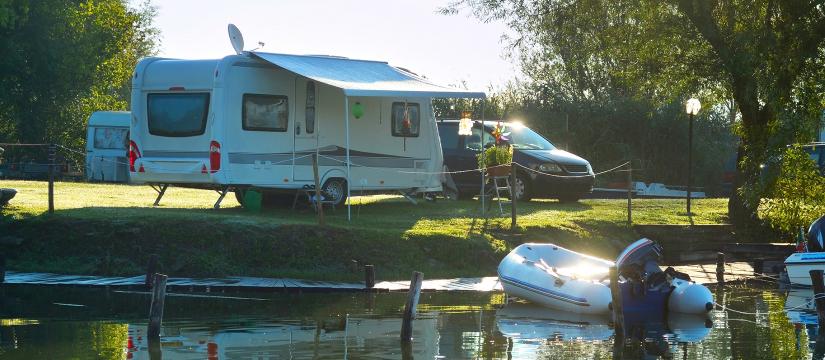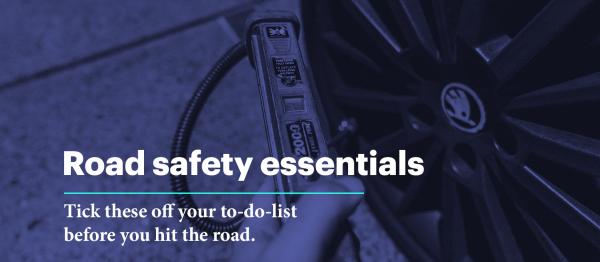This article was originally published in July 2022 and has been updated.
Share this story:
So, you’ve finally decided to bid adieu to life as a landlubber and become a captain on the high seas. Good choice. Welcome to the world of boats!
Shortly, you’ll be catching a feed with the family, wakeboarding with your mates or maybe even hoisting a few sails. But before you part with your hard-earned money and hit the water, there are a few things to keep in mind. So you don’t have to stress too much, The Captain has put together this helpful guide to lead you through each step in buying your first boat.
Step one for buying your first boat is simple — choose your ride. So, what kind of boating do you want to do? Will you be cruising, fishing, sailing, wakeboarding, waterskiing or hunting for sunken treasure?
Next, think about how many people you plan on taking out and what size boat you’ll need. Do you plan on taking it offshore? Do you want a monohull or a multihull? Fibreglass or aluminium? Inboard or outboard engine?
Here’s a list of different boat types to help get the inspiration flowing:
Dinghy — a good way of getting to the mothership
Tinnie — everyone should do their unofficial apprenticeship in these hardy gems
Side console — an alternative to the console
Centre console — 360-degree fishability and visibility
Centre cab — a compromise between cabin space and walk-around
Runabout — a classic allrounder
Bowrider — room for the kids up front
Wake boat — if you’re seriously into water sports, specifically wakeboarding
Ski boat — family fun awaits
Race boat — strap in for high-octane action
Bass boat — a low-profile boat to stalk fish
Hardtop — keep the weather out and the family warm
Flybridge — the ideal spot to view the game-fishing action
Yacht — sail away, no fuel tickets required
Pontoon — inshore party animal
Catamaran — stability and efficiency
Motor yacht — take your home with you
Super motor yacht — take your mansion with you
There’s no single best choice for what kind of boat to get, because it all comes down to personal preference and how you plan on using it. If you’re having a hard time narrowing down your choices, consider heading to a boat show. You’ll be able to jump aboard everything from a tinnie to a super yacht and speak to people in the industry to ask them questions. But in the absence of a boat show, here are a few things to keep in mind:
Once you’ve picked the type of boat, it’s time to decide on a budget and whether you’re going to go new or second-hand. In most cases, a boat will immediately lose value the moment it sails off the showroom floor. In some circumstances, this can be a small price to pay compared to buying a second-hand boat that has issues, so just be sure to do your research.
When buying new from a boat dealer, the BMT (boat, motor and trailer) will come with warranties, a full rundown on how everything works, and you’ll always have someone to call if you’ve got any questions or problems.
But if you’ve got a bit of experience with boats and are a bit handy on the tools, then you could score a gem second-hand. To help identify potential problems, consider hiring a shipwright (a person who knows about boat construction). A good shipwright will be able to tell you whether the boat’s hull is in good shape, if there are any potential issues with the stringers/transom and if any repairs are needed.
If you do decide to buy second-hand, ask the owner to supply the boat’s HIN (hull identification number) so you can check the online database to make sure it’s (a) owned by the seller, and (b) no finance companies have a claim to it. Like a second-hand car purchase, you should always ask to see the motor’s service history and receipts for any work allegedly done. Additionally, make sure the boat is registered to the relevant state authority and that the seller has the transfer papers ready to sign over to you. You may also want to consider boat insurance before you set sail.
With the due diligence out of the way, it’s time to have some fun. A crucial part of buying a boat is the sea trial — just like test-driving a car. Obviously, a boat test is a little more involved, so only ask the owner or dealer to take you for a sea trial if you’re very serious about the purchase. Along with getting a feel for the boat, this is also a good time to make sure everything works as stated by the seller. Ensure all the electronics and pumps are operational and that the motor starts easily. If the boat is designed for offshore use, take it into some swell to make sure it performs correctly, as even a poorly designed boat will run nicely on flat water. Drive the boat slow and drive it fast; drive it into the sea and down the sea. After 20 minutes, you should have a fair idea how the hull performs in the water and how well the motor runs. The sea trial is also a great opportunity to get the seller to give you a rundown on the boat’s systems and features.
Buying a boat requires patience and research. It’s important not to rush into a purchase or make one based on impulse. Many things can lead you astray when shopping for a boat — it may be tempting to buy something because someone else will beat you to it or the price seems right. But it's best to take some time before making the big decision — and only pull the trigger on the purchase when all your ducks are in a row. It’s also smart to keep in mind that boats are expensive toys, even after the initial purchase. Factor in ongoing wallet-busters such as storage/berthing/mooring costs, regular maintenance, fuel, registration and insurance.
All content on the NRMA Insurance Blog is intended to be general in nature and does not constitute and is not intended to be professional advice.


